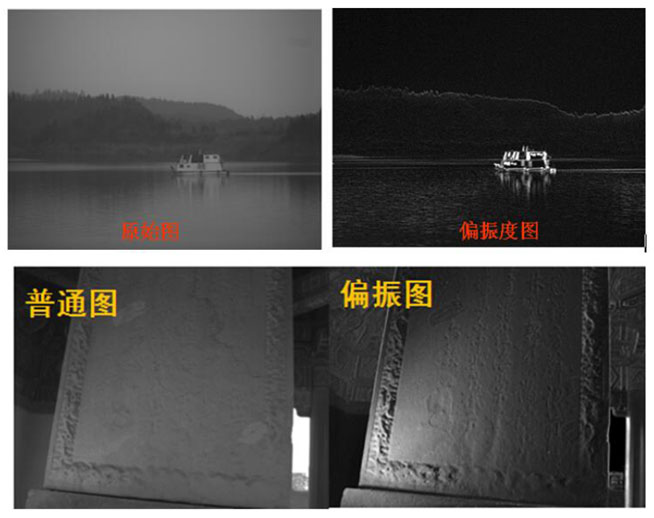

Polarization imaging detection technology, as a new detection technology developed in recent years, can obtain the polarization intensity, degree of polarization, polarization angle, polarization ellipsometry and emissivity of the target optical radiation, and greatly increase the amount of information of the target being detected. Polarization imaging spectrometer uses polarization to reflect the periodic variation of electric field vector of light. According to the different vibration directions of electric field vector, light can be divided into non-polarized light, linear polarized light, circularly polarized light, and its various combinations. Polarization imaging technology has advantages in invisible liquid, target in shadow, texture and fog removal.
Polarization imaging technology has the following characteristics:
1.The polarization state and radiation intensity of the ground target can be obtained simultaneously.
2.It can detect the polarization changes caused by the attributes such as surface roughness, edge and texture of the target sharply.
3.It can detect some targets with low emissivity and those in the shadow of other objects.
4.It can expose some camouflage targets of traditional anti-optical detection.
application area:
Identification of Fuzzy Literature on Epigraphy(Recognition of Fuzzy Inscriptions)
Target detection(The polarization difference caused by the roughness and conductivity between the target and the background can be used to highlight the outline of the target, which can effectively improve the detection efficiency of the target.)
Marine environmental monitoring(It can be used to detect whether the sea water is polluted, whether there are clouds and mists on the sea surface, the size distribution of clouds and mists, the height of waves, the composition of seawater, etc.)
Biomedical research(Polarization imaging technology can be used to measure, compare and analyze the polarization characteristics of biological tissues before and after pathological changes.)
Aerial remote sensing(Such as topography, surface, landform)
